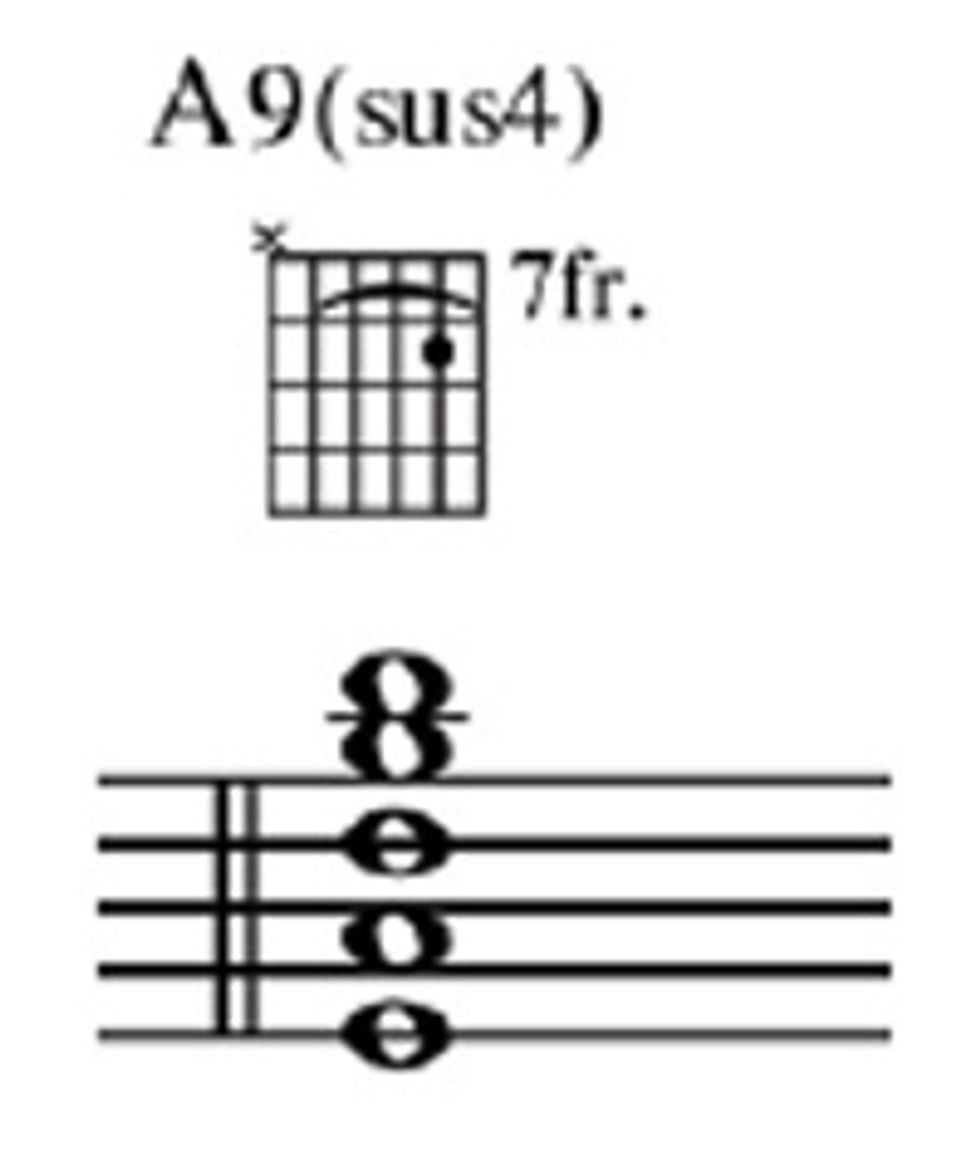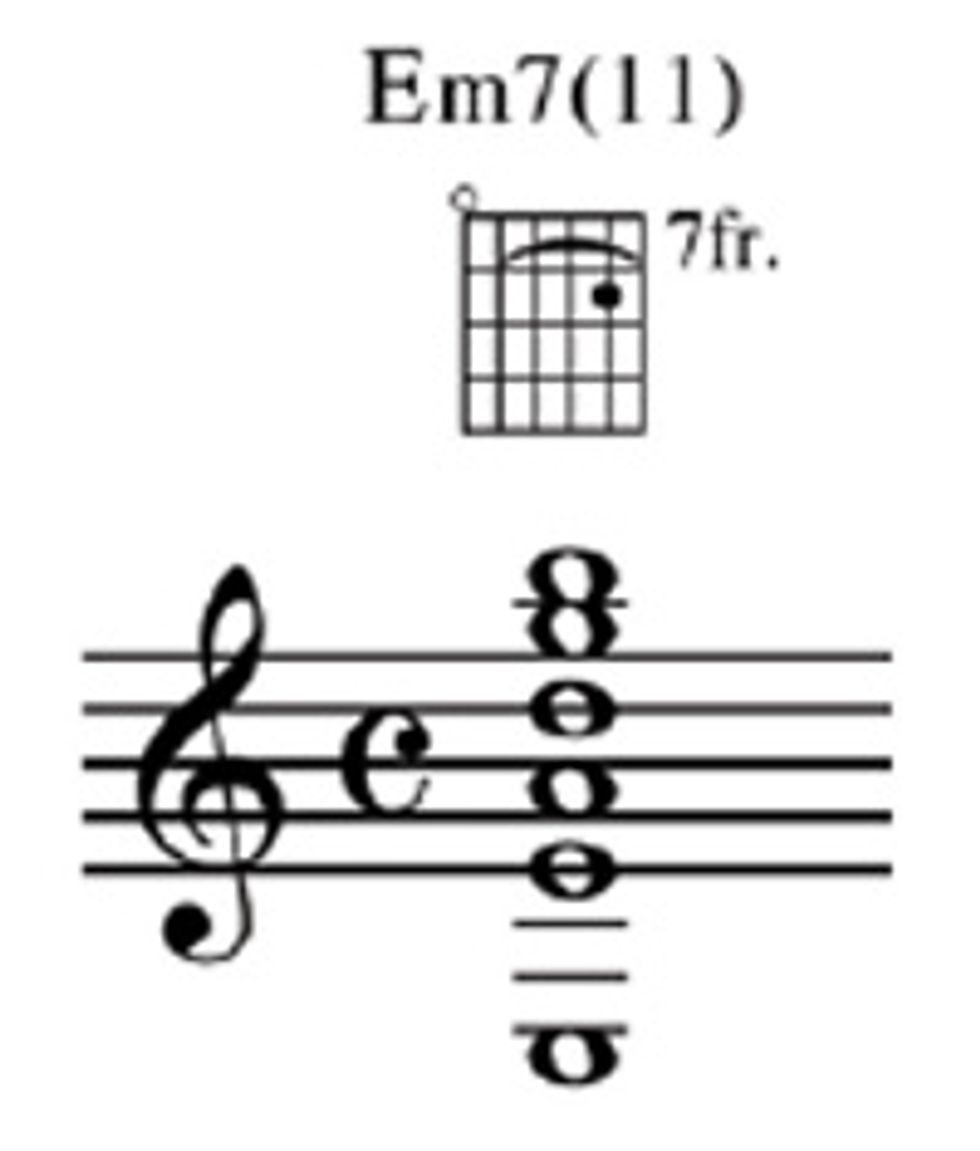Incorporating the guitar''s easiest chords into your music
Economy of movement is a beautiful thing to watch in a guitar player. It does not always take extra effort or energy to produce the richest sounds; it just takes a little smart shopping. This month, we’ll look at one chord that is easy to grab on even the most demanding acoustic guitar neck, and see how we can plug that in to many musical situations.
Name That Chord
Here’s a chord form that may be familiar. Play all six strings and listen. Sounds like some sort of Em, right? The chord form is similar to what we could play as an Em7 with the root on the 5th string. To find its proper name, let’s first identify each note in the chord. From low to high, including the open E (6th) string, we have E E A D G B. Now, let’s look at how each note functions in the chord: E is the root, so we can use the open E string and also the E an octave higher on the 5th string. A is the 4 or the 11 (we’ll come back to that). D is the %7, G is the %3, and B is the 5 of an E chord. We have the root, %3, 5, and %7, so we can quickly see an Em7 emerging. Now we can come back to that A, and see that it is functioning as a tension in this case, a note that is added after the 7th for extra color and interest. All together, that gives us Em7(11).
What If 
Continue through each note in the chord to see more possibilities: if the bass player gives us a D, we get a D6/9 sus4. If we think of the root as G, we can quickly see a G triad on the first three strings: D G and B, or the 5, root, and third of the chord. Mix in the E and the A from the 5th and 4th strings, and we have a G6/9. If you decide B is the root, then you will hear a Bm7(#5) (11). That could be the perfect chord for you in the context of, say, a chord solo in the key of G, making its way to a Cmaj7.
Such a Deal
We can already see this chord is giving us better than a two-for-one deal so far. Let’s not stop here. Tell that bass player to give us a C and look what we get: E is the 3, A is the 6 or 13, D is the 9, G is the 5, and B is the 7. Adding it all up, we can call this chord Cmaj9(13). I like to be clear about what I put on a lead sheet for other players, just as I appreciate clarity when I’m playing someone else’s chart. For this reason, it’s best to really spell it out, rather than taking a shortcut to call it Cmaj13.
Finally, let’s call it F: E is the 7, A is the 3, D is the 6 or 13, G is the 9, and B is the #11. This chord has it all: the 3 and the 7, making it clearly a major 7 chord, and the multi-colored additions of the 9, #11 and 13. We could, in fact, call this one Fmaj13, but to be on the safe side, I like to call it Fmaj9(#11,13). This chord is a real zinger. The sound of that #11 on top makes a great surprise ending, or an interesting comment to make in the middle of a progression. I’ve even used it in a blues as an unexpected, tension-filled chord to land on.
Work It
Make sure to play and listen in context, either by playing with a friend to give you the bass notes, or recording a track for yourself to try these out. The chord qualities will come sharply into focus when you hear how it functions with each root, as in an optical illusion that changes depending on its background. Since it is such a great deal, why not add to your shopping cart by transposing this chord around the neck and renaming it in each spot. For practice, and the mental exercise of recognizing it everywhere and getting to it in time, sit down with a lead sheet or a memorized tune and find as many places to substitute this chord form as you can.
Jane Miller
Jane Miller is a guitarist, composer, and arranger with roots in both jazz and folk. In addition to leading her own jazz instrumental quartet, she is in a working chamber jazz trio with saxophonist Cercie Miller and bassist David Clark. The Jane Miller Group has released three CDs on Jane’s label, Pink Bubble Records. Jane joined the Guitar Department faculty at Berklee College of Music in 1994. janemillergroup.com


